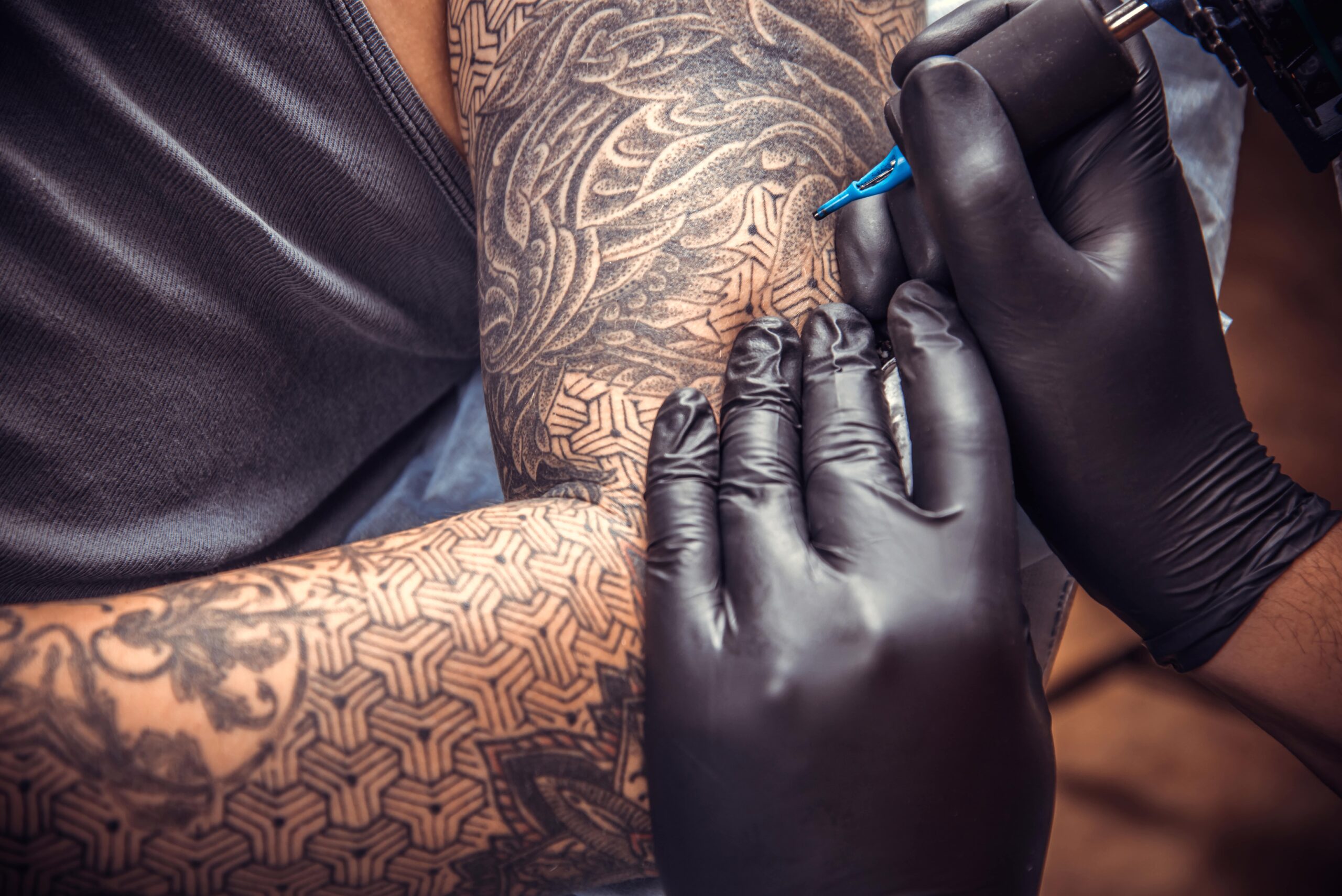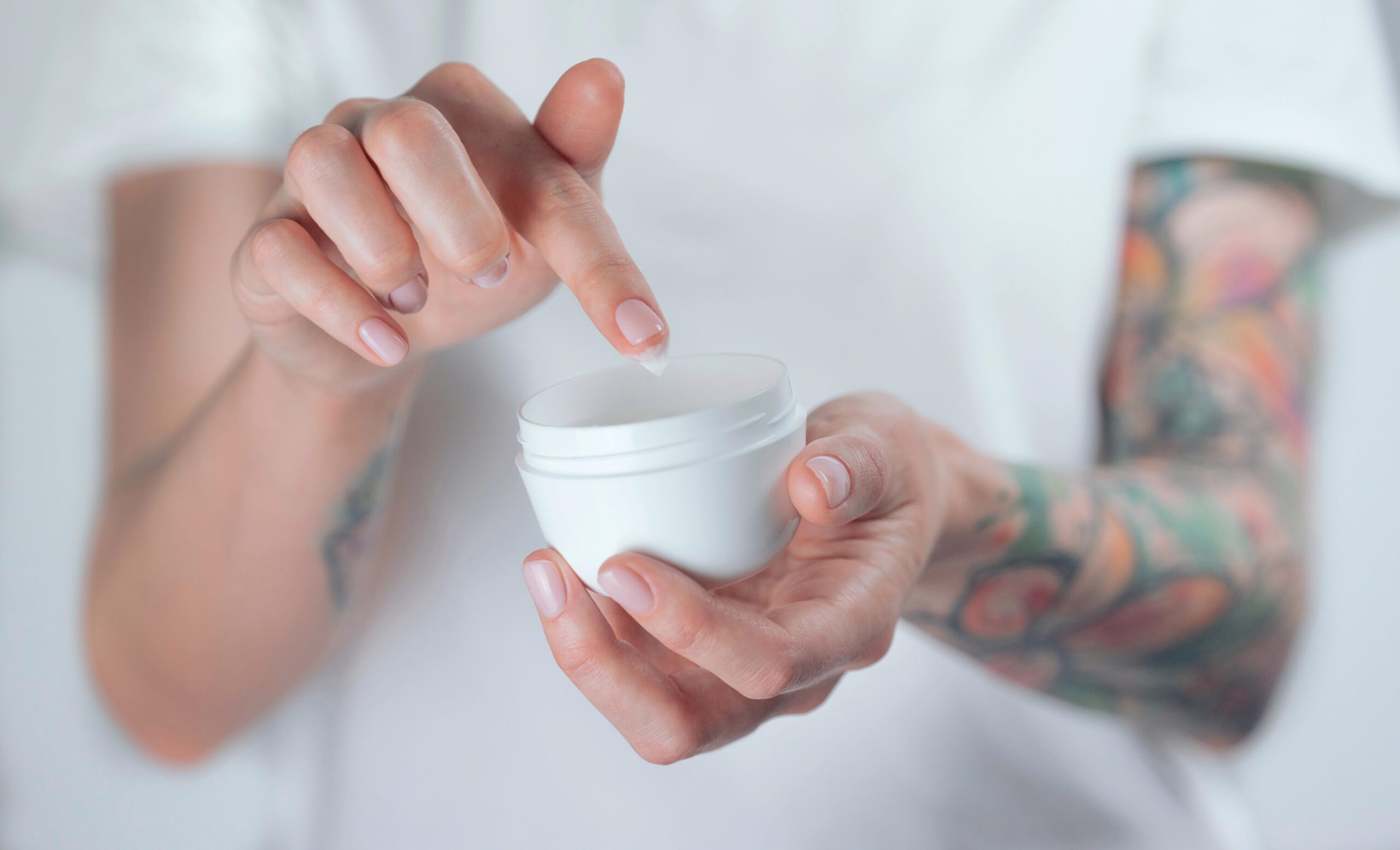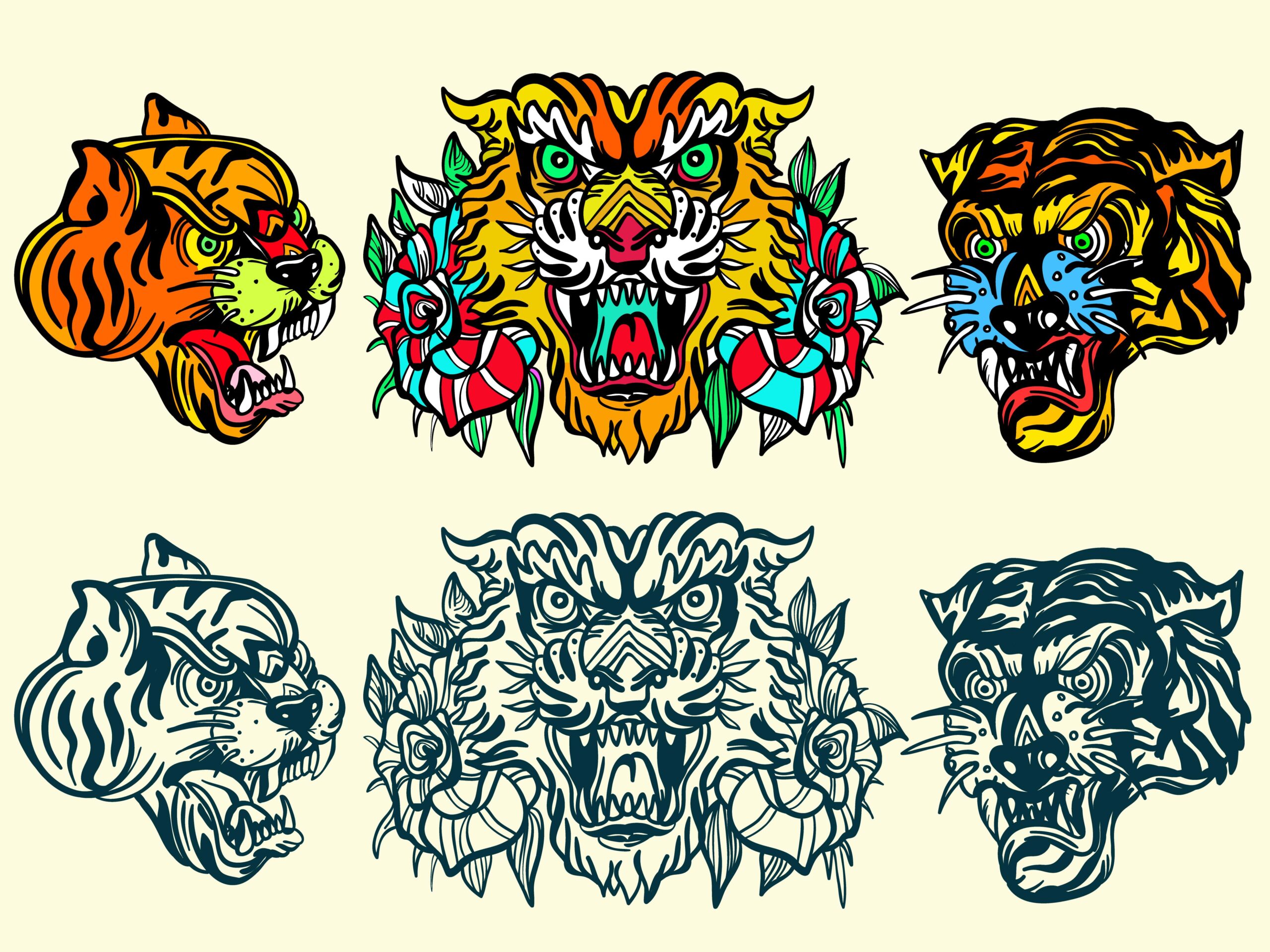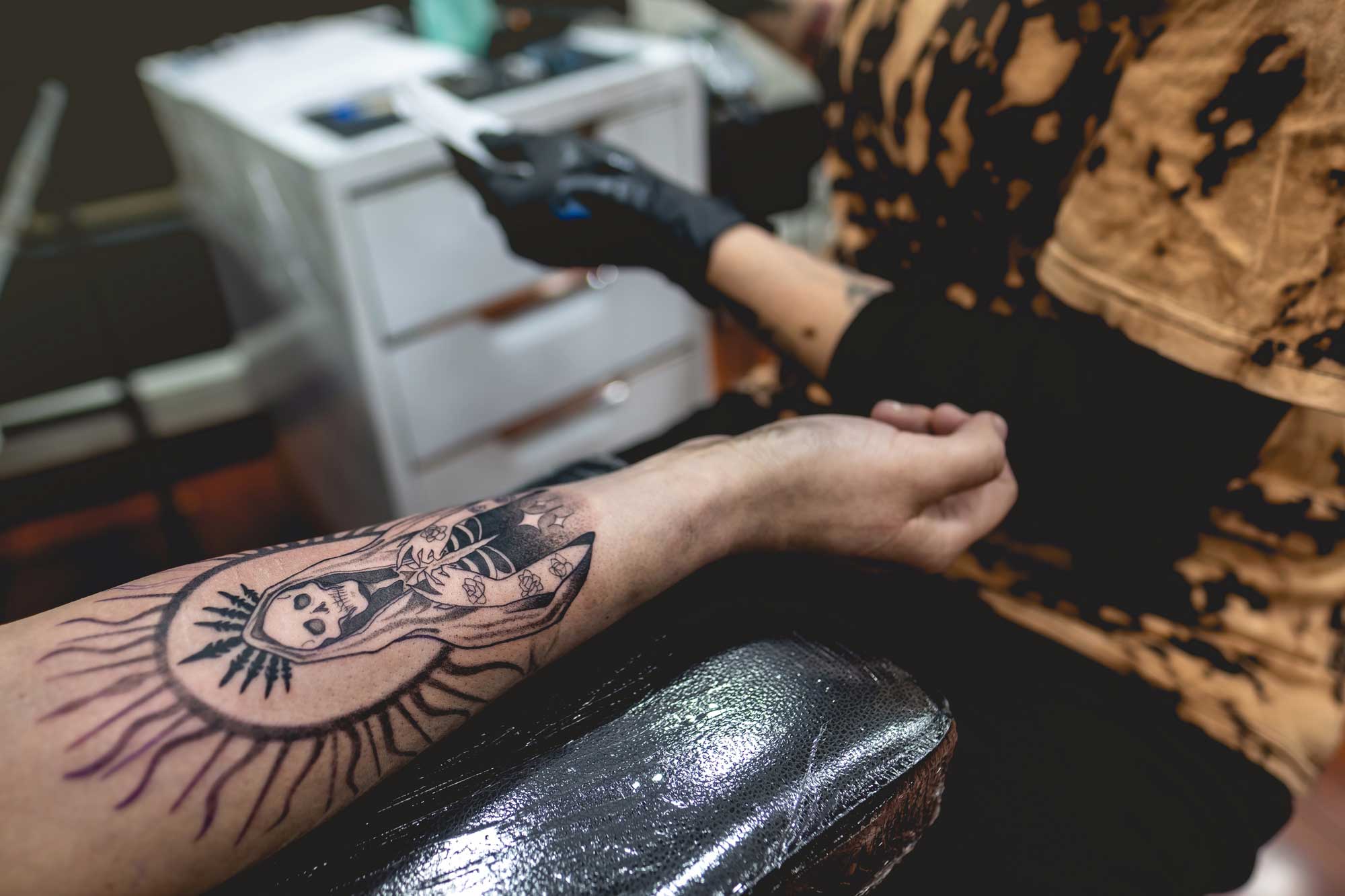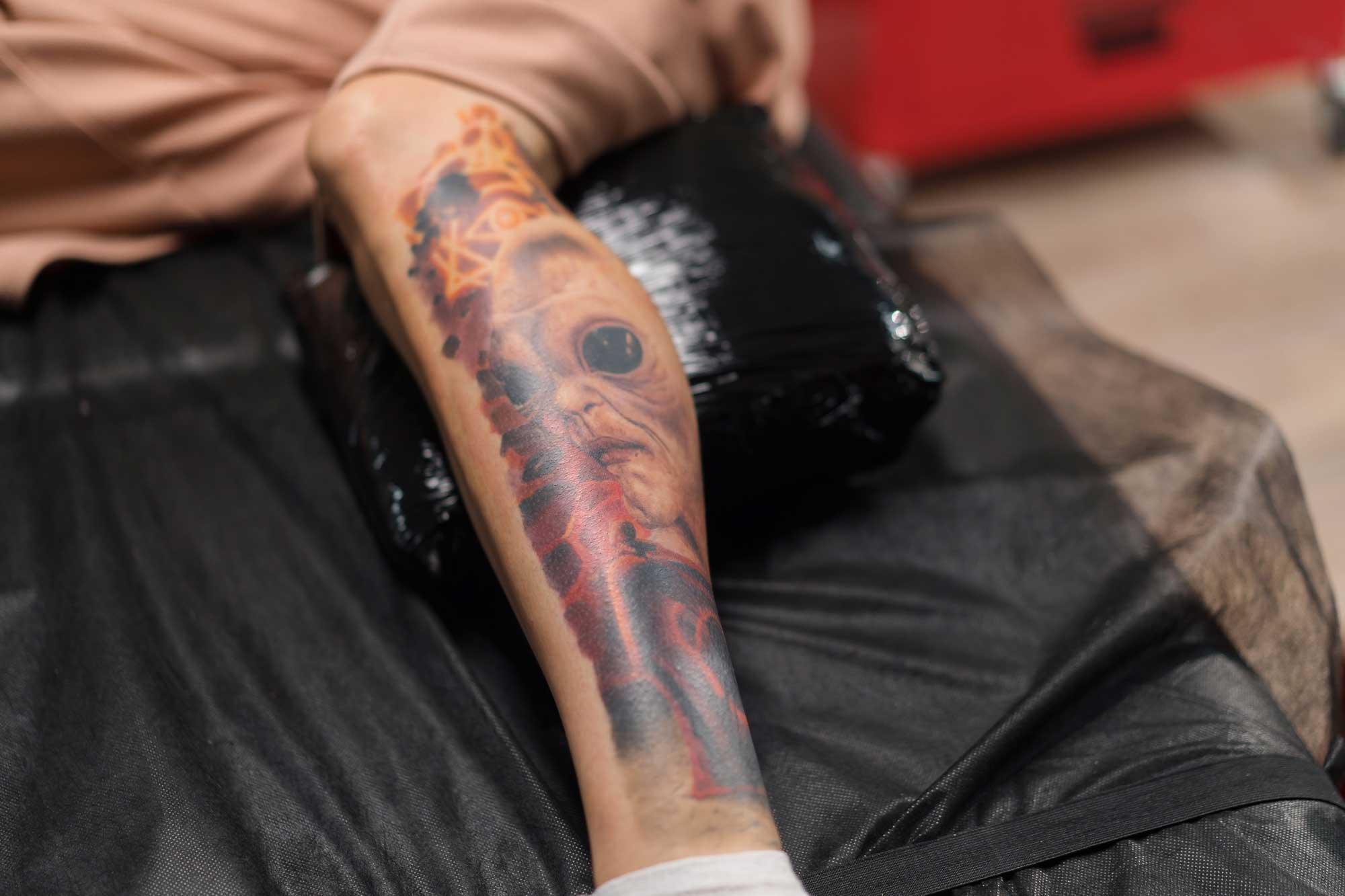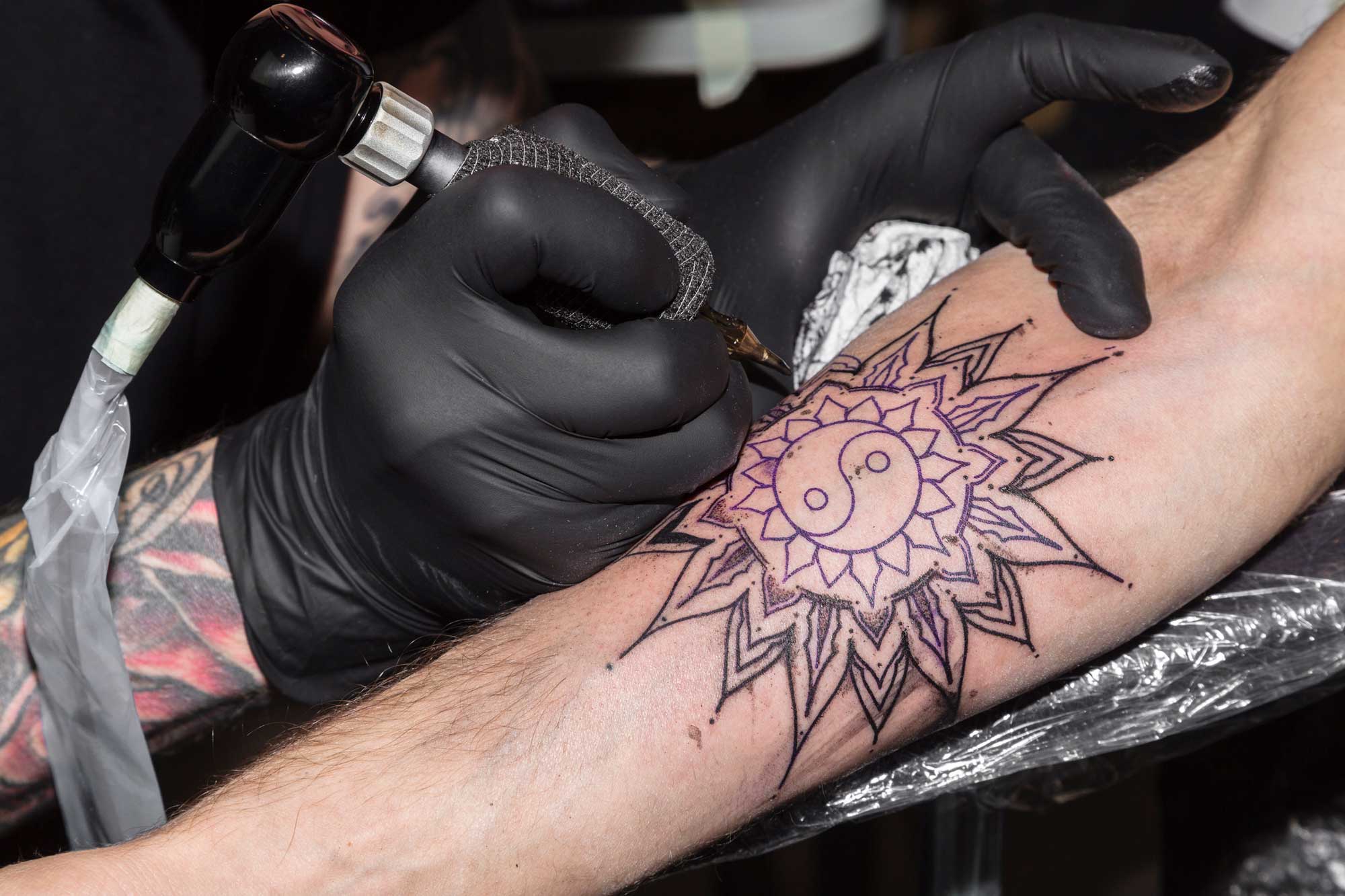Getting your first tattoo is an exciting experience! It’s an opportunity to express yourself in a unique way.
But figuring out where to place your first tattoo can be a huge decision.
Before you book your first tattoo appointment, let’s take a look at how you can choose the perfect spot for your debut ink:
Where Should a Beginner Get Their First Tattoo?
Choosing the right place on your body for your first tattoo is key to having a positive experience! It’s important to think about things like pain level, tattoo size, and the details in the design.
The Least Painful Place to Get a Tattoo
When it comes to getting your first tattoo, your first question is probably:
“How much will this tattoo hurt?”
Until you know what getting a tattoo feels like and your pain tolerance, it’s probably a good idea to start with low-pain parts of the body.
This means choosing a place with thicker skin and fewer nerve endings. This will make the experience less painful and discomforting.
The least painful areas to get a tattoo are:
- Upper arm
- Calf
- Thigh
These areas provide a cushion of flesh, resulting in a milder sensation than sensitive areas like the ribs or spine.
When you take the plunge and get your first ink in an area with less tattoo pain, you’re not just minimizing discomfort.
You’re also setting yourself up for a positive tattoo experience that can boost your confidence and inspire you to explore more tattoo ideas!
The Size of the Tattoo
When it comes to tattoos, size matters – especially for first-timers. Starting with a smaller design will give you a chance to test the waters and get a feel for the tattooing process.
If you tackle a large and intricate piece, you’ll either be in the chair for a while or revisiting the tattoo shop to finish the design.
Smaller tattoos are quick and also offer you flexibility when it comes to placement. It’s easier to do a small tattoo in one of those less painful areas than a larger one.
You can also make your first tattoo discreet if you choose a small design that fits easily in easy-to-hide places. Smaller tattoos are also easier to conceal, making them a good choice for beginners.
Colors and Details
The colors and details of your first tattoo can also influence where you choose to put it.
Certain areas of the body are better for showcasing intricate designs, while others are more suited for bold, simple tattoos.
For example, areas with lots of space (like the back or thigh) are perfect for larger and more elaborate artwork.
On the other hand, smaller areas like the wrist or behind the ear may limit the level of detail but offer a chance to make a statement with a minimalist design.
When you discuss your ideas during your tattoo appointment, ask about how the placement will complement the colors and details of your design.
First Tattoo Ideas
Still not sure where to get your first tattoo? Here are some first tattoo suggestions to get you started:
Wrist or Inner Arm
For a classic first tattoo, consider a small symbol or meaningful word on your wrist or inner forearm. This placement is easily visible and can serve as a daily reminder of what matters most to you.
Back or Ribcage
If you’re drawn to nature-inspired designs, the ribcage or back can be excellent choices. These areas offer ample space for larger tattoos, allowing you to showcase intricate botanical or animal motifs.
Behind the Ear or Ankle
For a subtle yet stylish option, opt for a tattoo behind the ear or on the ankle. These placements are discreet but still allow you to express your personality and interests.
Ready to Get Inked?
Choosing where to put your first tattoo is a personal decision that should reflect your style, comfort level, and the tattoo design you want.
Take some time to think it through, and your first tattoo experience will be one to remember for all the right reasons!

